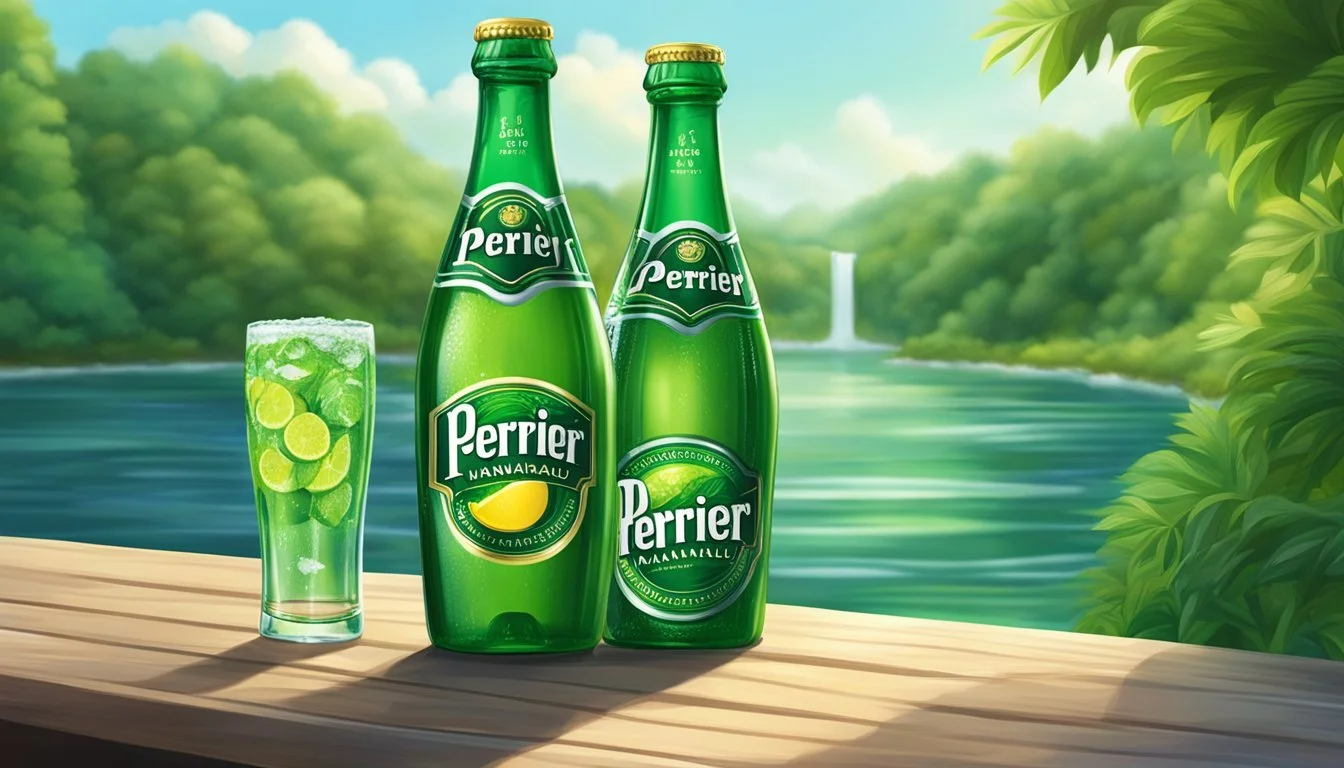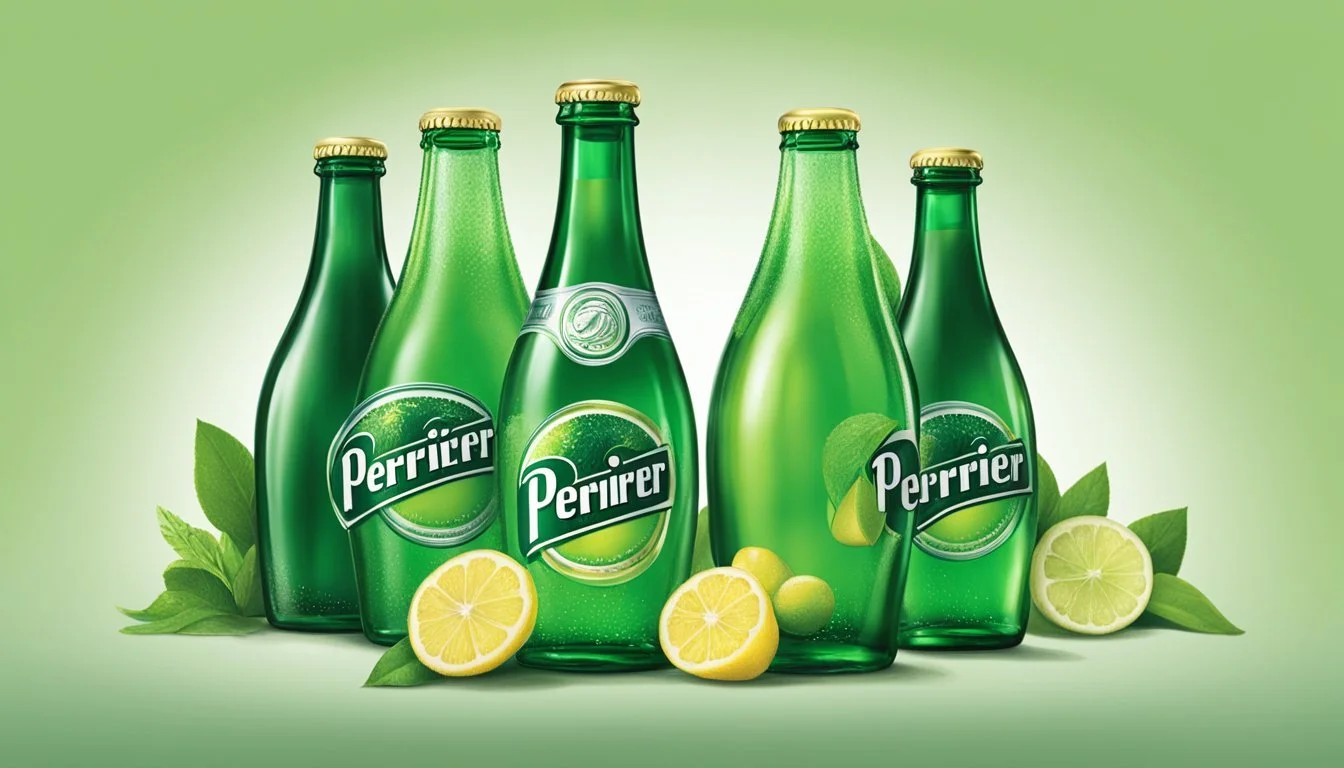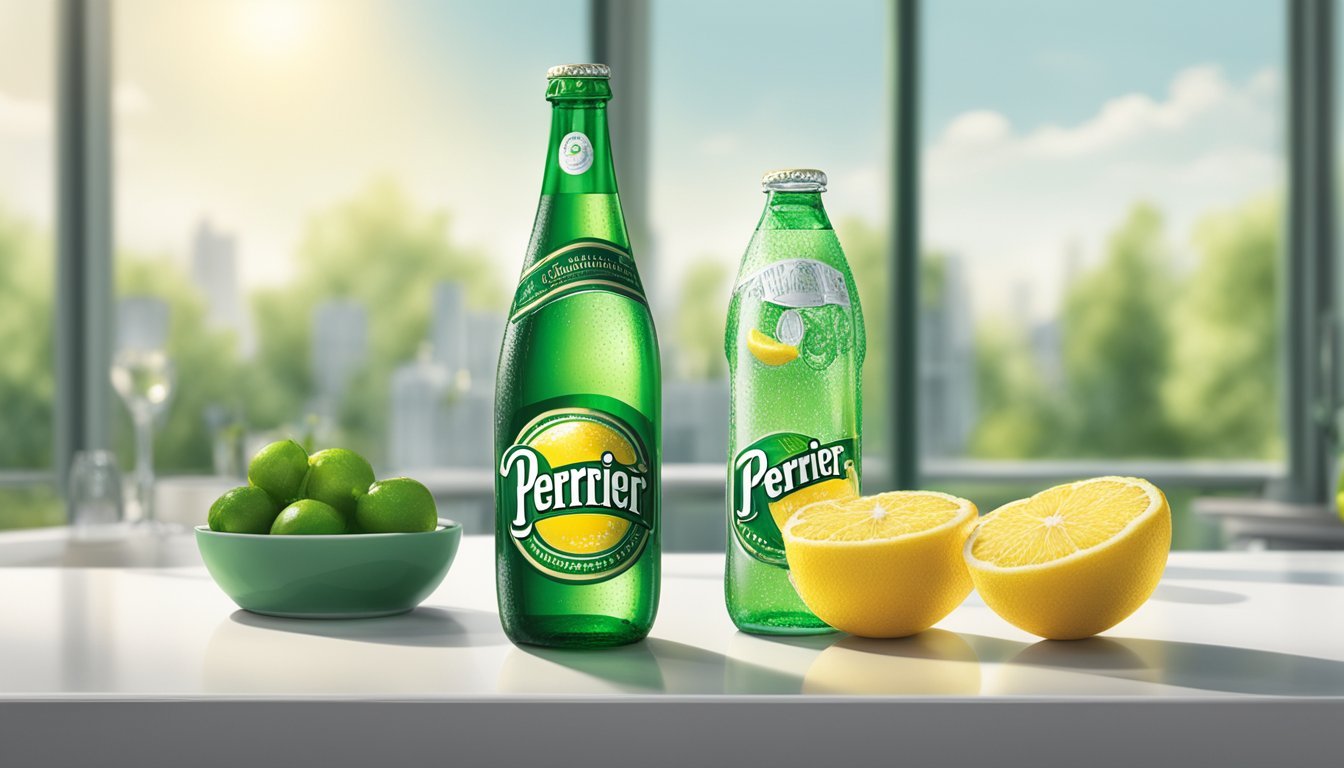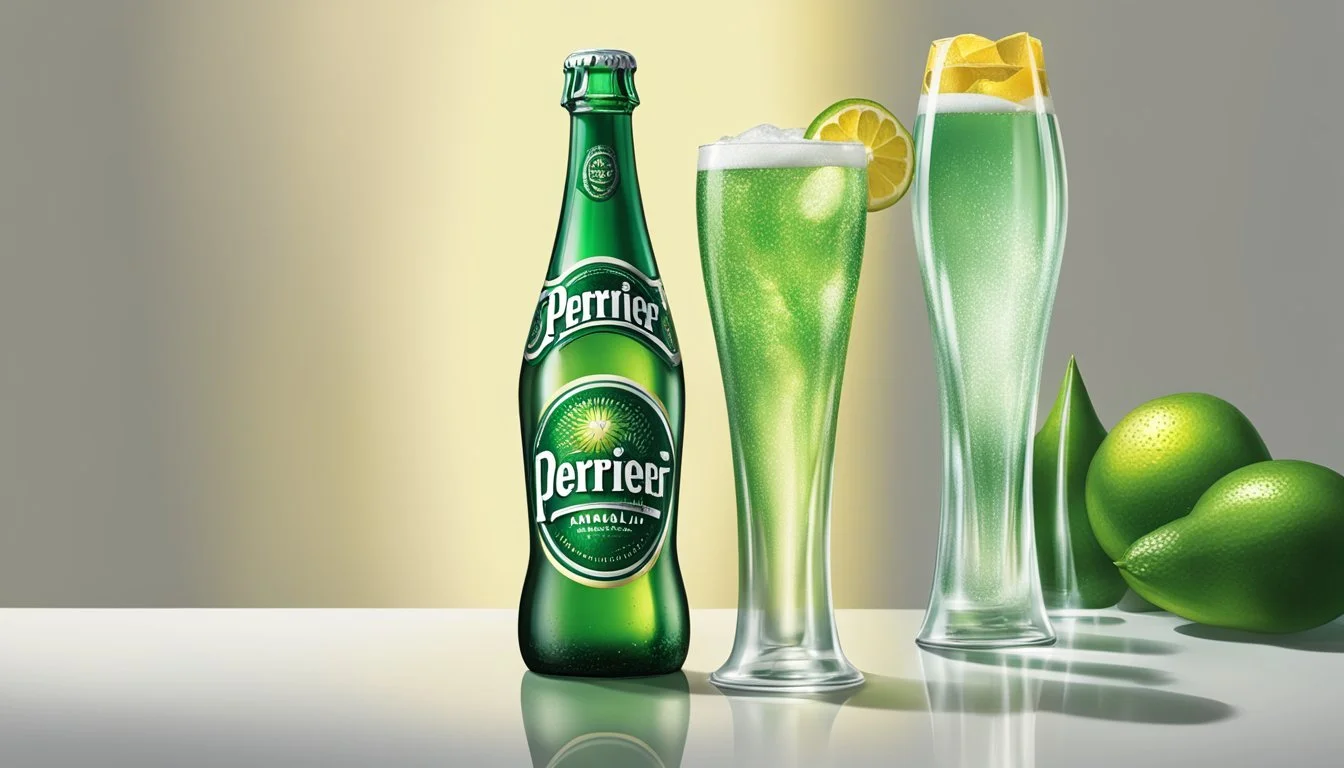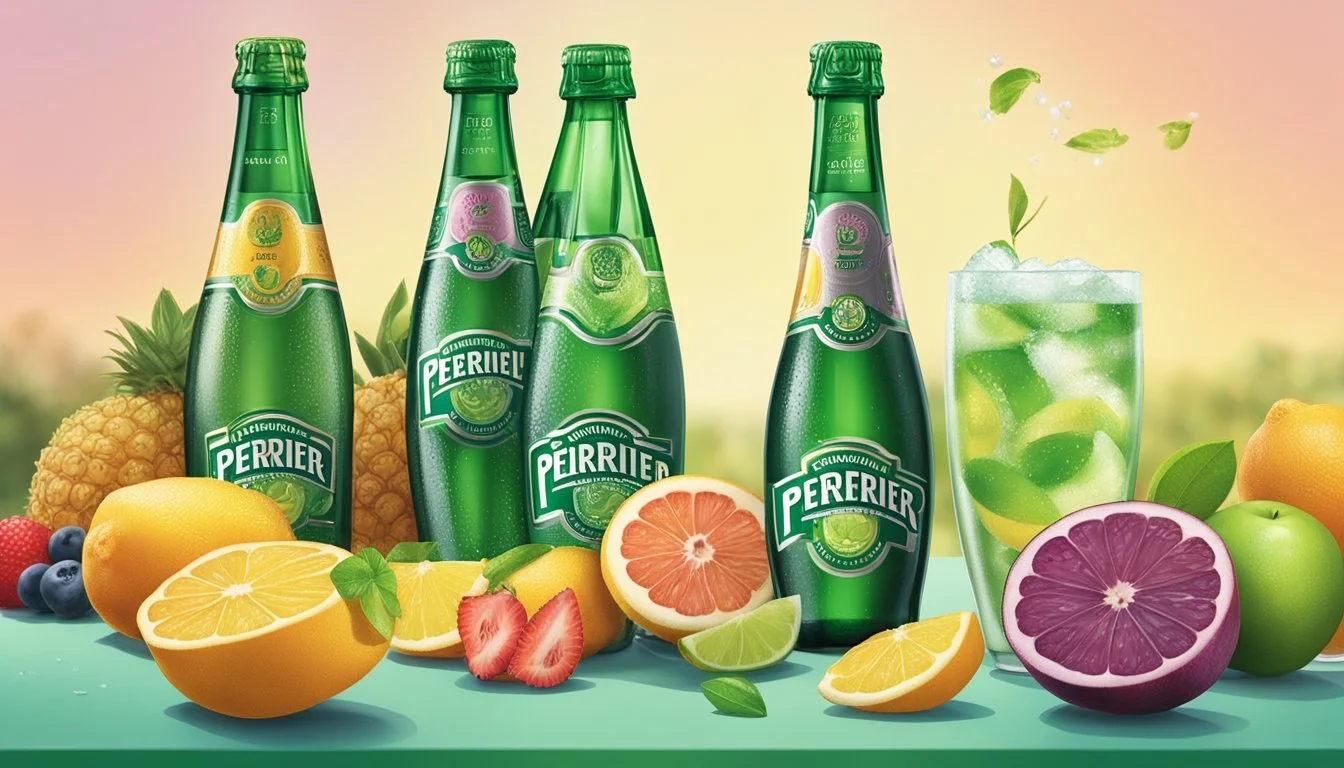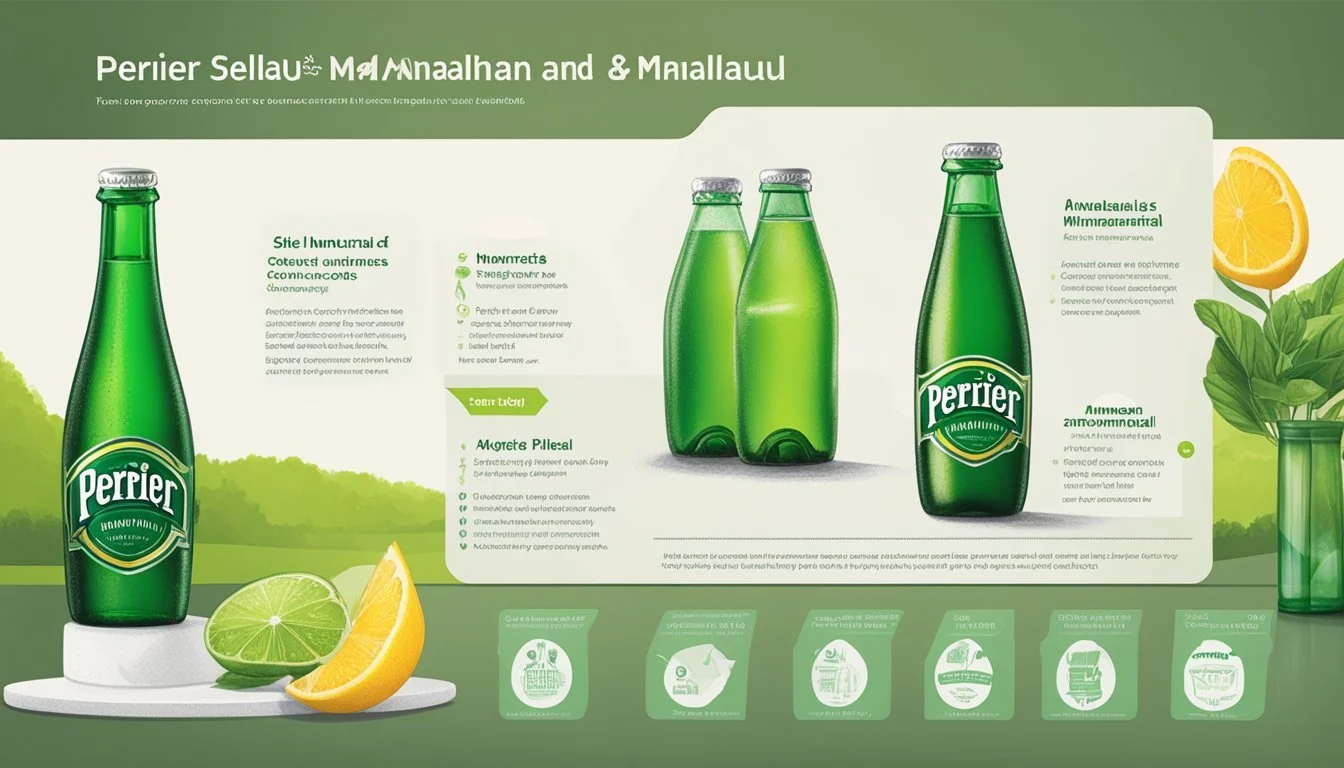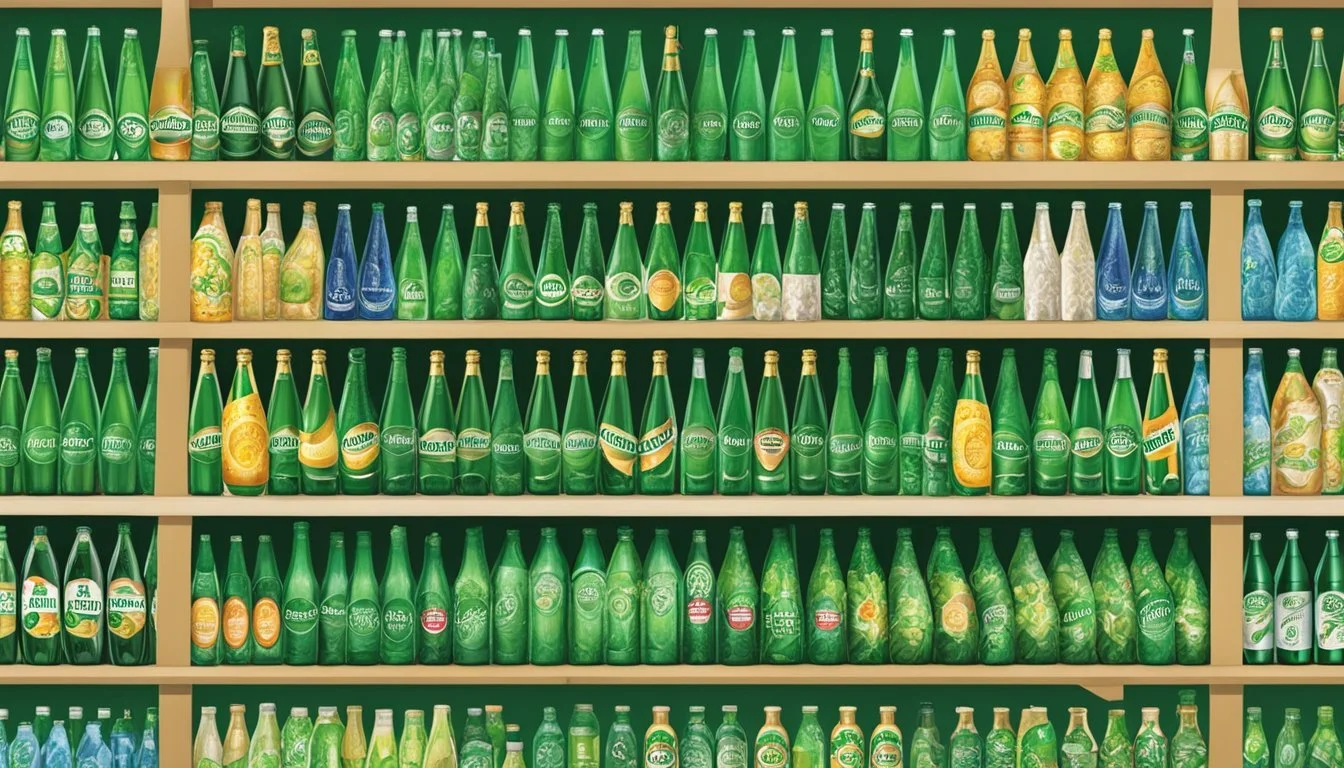Perrier vs. Mananalu
Comparing Premium Bottled Waters
Perrier and Mananalu are two distinct choices in the bottled water market, each boasting unique characteristics that appeal to different consumers. Perrier, a renowned brand with a history of delivering crisp, mineral-rich sparkling water, has been a favorite for many due to its refreshing taste and sophisticated image. Mananalu, on the other hand, is a relatively new entrant, offering pure, still water in a sustainable aluminum bottle, catering to eco-conscious individuals.
For those prioritizing a sparkling experience, Perrier stands out with its effervescent bubbles and subtle mineral essence, making it a delightful beverage on its own or as a mixer. Mananalu, however, takes the lead with its commitment to environmental sustainability, presenting a compelling choice for those who seek to reduce plastic waste while staying hydrated.
Both brands cater to different needs and preferences: Perrier appeals to those who enjoy a fizzy refreshment with a touch of mineral flavor, whereas Mananalu attracts those who prioritize the purity of still water and environmentally friendly packaging. This comparison aims to help you decide which bottled water aligns best with your personal preferences and values.
Understanding Bottled Water
Bottled water comes in various types and goes through different bottling processes. Each type serves distinct purposes and has unique characteristics.
Types of Bottled Water
Mineral Water contains minerals that occur naturally and are not added during the bottling process. It often comes from underground sources and is known for its health benefits.
Spring Water is also collected from underground sources, but it doesn't have added minerals. It flows naturally to the earth's surface and is often bottled at the source.
Purified Water originates from any source but undergoes purification processes, like reverse osmosis or vapor-distillation, to remove impurities. Brands like Mananalu offer purified water in recyclable aluminum cans, promoting sustainability.
Sparkling Water, such as Perrier, contains dissolved carbon dioxide gas, giving it a fizzy texture. It can be natural or artificially carbonated and is available in various flavors.
Tap Water is municipal water treated for safety and consumption. It's the source for many branded bottled waters after undergoing purification.
Bottling Processes
Reverse Osmosis is used to purify water by forcing it through a semipermeable membrane, removing solids and contaminants. Many purified water brands use this method.
Vapor-Distillation involves heating water until it vaporizes, then condensing the steam back into liquid form, ensuring almost complete purification. It's favored for eliminating a broad range of contaminants.
Spring and Mineral Water typically require minimal processing, focusing on filtration to remove particulates while preserving the natural mineral content.
Carbonation is crucial for sparkling water. Natural carbonation occurs underground, or carbon dioxide gas is added artificially after purification to create fizzy water.
Packaging plays a pivotal role in the environmental impact. Mananalu uses aluminum cans, which are fully recyclable, reflecting a commitment to reduce plastic waste. Conversely, Perrier often uses glass or plastic bottles.
Understanding these types and processes helps make informed choices about bottled water consumption.
History and Brand Origins
Perrier and Mananalu each have unique origins that reflect their brand identities and values. Perrier has a rich French heritage, while Mananalu represents a modern approach to sustainability.
Perrier: A French Legacy
Perrier traces its roots back to the French Alps. The brand was founded in 1863 when a natural mineral spring in Vergèze, France was discovered. Louis Perrier, a local doctor, acquired the spring and started bottling the sparkling water. By 1903, Sir St John Harmsworth of England purchased the spring and commercialized the brand. Perrier quickly became known for its distinctive green bottle and naturally carbonated water.
The brand expanded globally in the 20th century, becoming a symbol of sophistication and elegance. Key milestones, such as the launch of flavored variants and sponsorship of various cultural events, further solidified its market position. Perrier's commitment to quality and its long-standing heritage contribute greatly to its esteemed reputation.
Mananalu: Modern Arrival
Mananalu was established in 2019 by actor and environmental activist Jason Momoa. Unlike Perrier's traditional history, Mananalu emerged from a mission-driven initiative to combat single-use plastic waste. The name "Mananalu" combines "mana," meaning the sacred spirit of life, and "nalu," meaning a powerful wave in Hawaiian. This reflects the brand's dedication to sustainability and environmental impact.
From the outset, Mananalu aimed to offer purified water in 100 percent recyclable aluminum cans. The brand quickly resonated with eco-conscious consumers. Mananalu's focus on reducing plastic pollution and promoting sustainable practices distinguishes it from older bottled water brands. Its innovative approach and strong environmental message have made it a significant player in the market within a short span of time.
Nutritional Comparison
Perrier and Mananalu offer different nutritional profiles. This section will compare their mineral content and the presence of additives and electrolytes to determine their impact on health.
Mineral Content Analysis
Perrier, being a natural mineral water, contains calcium, magnesium, and potassium, which are essential for various bodily functions. The precise composition includes:
Calcium: 147 mg/L
Magnesium: 3 mg/L
Potassium: 1 mg/L
Sodium: Less than 10 mg/L
Mananalu, marketed as a sustainably packaged option, typically features lower mineral concentrations compared to Perrier. It primarily focuses on hydration benefits without the emphasis on naturally occurring minerals:
Calcium, Magnesium, Potassium, and Sodium levels: Generally minimal or not specified.
The significant mineral presence in Perrier may appeal to individuals looking to supplement these nutrients naturally through their beverages.
Additives and Electrolytes
Perrier is free from artificial additives and sweeteners. Its naturally carbonated nature, coupled with the absence of calories, makes it favorable for those avoiding extra ingredients.
Mananalu, while also free from artificial additives, may occasionally include added electrolytes to enhance hydration. Common electrolytes found in enhanced bottled waters include sodium and potassium, though specific quantities for Mananalu can vary.
Both brands maintain a focus on purity, with Mananalu aiming to provide a straightforward hydration solution and Perrier leveraging its mineral content to offer additional health benefits.
Physical Characteristics
When contrasting Perrier and Mananalu, key physical aspects include the carbonation levels and packaging options they offer. Each brand provides distinct features that cater to different consumer preferences and environmental considerations.
Carbonation Levels
Perrier is renowned for its highly carbonated sparkling water. The natural mineral water is infused with carbon dioxide to create its signature, refreshing bubbles. This makes Perrier an ideal choice for those who enjoy the effervescence of sparkling water.
Mananalu, on the other hand, primarily offers still water. With purified water filling their 100% recyclable aluminum cans, Mananalu prioritizes hydration without the fizz. While Mananalu doesn’t focus on carbonation, its smooth still water provides a clean and refreshing option.
Packaging Options
Perrier stands out with its iconic glass bottles, which come in various sizes. These bottles are not only visually appealing but also eco-friendlier than plastic alternatives. Perrier also offers canned sparkling water, enhancing convenience while maintaining environmental consciousness.
Mananalu takes a different approach by using aluminum cans and bottles. These containers are resealable and infinitely recyclable, highlighting the brand's commitment to reducing single-use plastics. For an even broader impact, their "Drink One, Remove One" initiative aims to eliminate plastic waste from the oceans, further underscoring their environmental mission.
Taste Profiles
Perrier and Mananalu offer distinct taste experiences that cater to different preferences. While Perrier is well-known for its classic sparkling water, Mananalu emphasizes eco-friendly packaging with a pure taste.
Taste Test Studies
In multiple taste tests, Perrier often receives high marks for its crisp carbonation and mineral-rich profile. Tasters appreciate its refreshing mouthfeel and subtle, natural taste. The effervescence of Perrier adds a lively element that many sparkling water enthusiasts seek. Notable tasters describe it as having a balanced mineral content that doesn't overpower.
Mananalu, on the other hand, focuses on the purity of its still water, packaged in aluminum to promote sustainability. Taste tests highlight its clean and crisp profile, with no aftertaste. Some testers note a lack of "plastic tang," often found in traditional bottled waters. This makes Mananalu a favorite among those who prefer a neutral and pure water experience.
Sommelier Insights
Sommeliers, who often have a refined palate for water as well as wine, typically note Perrier for its distinctive sparkling qualities. They point out its fine bubbles and consistent carbonation, which complement a variety of meals without overwhelming the palate. The subtle mineral hints in Perrier also pair well with light seafood and salads.
Mananalu is praised for its purity and sustainability. Sommeliers find its non-carbonated nature ideal for hydration without interfering with food flavors. They commend the clean and refreshing taste, viewing it as an excellent choice for those who prefer still water. The eco-friendly packaging also resonates with experts mindful of environmental impact, enhancing its appeal among discerning consumers.
Environmental Impact
Both Perrier and Mananalu have taken steps to address environmental sustainability but in different ways, examining source sustainability, bottling methods, and waste management.
Source Sustainability
Perrier sources its water from a natural spring in Vergèze, France. The company maintains a commitment to protecting this source through sustainable management practices, ensuring minimal environmental disruption.
Mananalu, founded by Jason Momoa, focuses on preserving ocean ecosystems. For every bottle sold, the company removes equivalent plastic waste from ocean-bound paths, emphasizing both the source's purity and environmental conservation.
Bottling and Distribution
Perrier uses glass and plastic bottles. Though recyclable, plastic bottles contribute to environmental concerns, and the production process is energy-intensive. Distribution involves shipping from France, which adds to carbon emissions.
Mananalu opts for aluminum cans, which are infinitely recyclable and have a lower environmental impact compared to plastic. Additionally, aluminum's lightweight nature reduces shipping emissions, making the entire process more eco-friendly.
Waste and Recycling
Perrier's recycling efforts focus on improving the recyclability of their plastic bottles. However, the initial environmental cost of plastic production remains high, and actual recycling rates can be low.
Mananalu's aluminum cans boast a near-perfect recycling loop. The brand's "Drink One, Remove One" initiative ensures that the purchase of a bottle actively contributes to removing plastic waste, further reinforcing their commitment to reducing environmental impact.
Through these various strategies, both brands aim to mitigate their environmental footprint, though their approaches differ in focus and execution.
Economic Considerations
Economic factors play a crucial role in determining the viability and attractiveness of bottled water options like Perrier and Mananalu. These factors include their pricing strategies and the competitive landscape in the market.
Pricing Analysis
When comparing Perrier and Mananalu, pricing is a critical factor for consumers looking for premium bottled water options. Perrier, known for its sparkling mineral water, typically ranges between $1.50 to $2.50 per bottle, depending on the size and point of purchase.
Mananalu, with its aluminum packaging and environmental mission, often retails slightly higher, ranging from $2.00 to $3.50 per unit.
Perrier benefits from its established brand and mainstream distribution channels, which help in maintaining a competitive price point. Mananalu, on the other hand, not only emphasizes its unique selling proposition of plastic-free packaging but also factors in the cost of sustainability initiatives when pricing their product.
Market Competition
In the bottled water market, both Perrier and Mananalu face stiff competition from other premium brands. Perrier competes with other established sparkling water brands like San Pellegrino and LaCroix. These brands offer similar price points but differ in flavor profiles and carbonation levels.
Mananalu, focusing on still water and sustainability, competes with brands like Boxed Water and Open Water. These are also marketed towards environmentally conscious consumers.
The market is crowded with numerous bottled water brands, each vying for consumer loyalty. While Perrier leverages its longstanding reputation and expansive product line, Mananalu uses its environmental mission to capture market share.
In summary, both brands operate under different pricing strategies and face unique competition in their respective niches within the bottled water market.
Public and Consumer Perception
Perrier and Mananalu are two distinct bottled water brands, each with its own unique identity and consumer base. This section addresses how each brand is perceived in terms of reputation and customer feedback.
Brand Reputation
Perrier
Perrier, a French brand, carries a legacy of luxury and elegance. Known for its sparkling mineral water, the brand often associates itself with high-end dining and luxury hotels. Collaborations with designers and artists further enhance its premium image. Consumers perceive Perrier as a staple in fine dining and see it as a symbol of sophistication.
Mananalu
Mananalu, founded by actor Jason Momoa, has a strong environmental mission. Its aim is to reduce plastic waste by packaging water in recyclable aluminum cans. This eco-friendly approach has garnered positive attention from environmentally-conscious consumers. The brand’s commitment to sustainability and ocean conservation resonates well with a younger, more eco-aware demographic.
Customer Reviews
Perrier
Perrier receives high praise for its crisp and refreshing taste. Customers appreciate its effervescence and often use it as a mixer in cocktails. Some, though, find it to be an expensive option compared to other sparkling waters. Negative feedback is scarce but mostly related to personal taste preferences and price sensitivity.
Mananalu
Customer reviews for Mananalu highlight its innovative packaging and environmental benefits. Many appreciate the aluminum cans over plastic bottles. Reviews often mention the positive impact on reducing plastic pollution. Some criticism points to the cost, with a few consumers finding it pricier than standard bottled water. The overall sentiment remains highly favorable due to its eco-conscious focus.
Conclusion: Which Water Wins?
When comparing Perrier and Mananalu, several factors come into play.
Taste is highly subjective. Perrier, known for its sparkling mineral water with a distinctive carbonation, appeals to those who enjoy fizzy refreshment. Mananalu offers purified water in aluminum cans, aimed at a crisp and clean flavor profile.
Hydration properties of both waters are effective. Perrier provides the benefits of sparkling water while Mananalu focuses on delivering pure hydration without additives.
Price is another consideration. Perrier, being a well-established brand, is often found at various price points depending on the packaging and location. Mananalu, as a newer entrant with a focus on sustainability, might be priced differently due to its use of recyclable aluminum cans.
Environmental Impact sets the two apart significantly. Mananalu aims to eliminate single-use plastic bottles by using 100% recyclable aluminum. Perrier, while often found in glass bottles, also offers plastic options, which can be less favorable environmentally.
Packaging differs as well. Perrier’s glass and plastic bottles maintain freshness with their iconic look. Mananalu’s aluminum cans are both durable and refillable, positioning them as a more sustainable choice.
For a quick glance at how the two compare:
Feature Perrier Mananalu Taste Sparkling, mineral-rich Pure, crisp Hydration Effective Effective Price Varied Potentially premium due to sustainable packaging Environmental Impact Mixed (glass and plastic) High (recyclable aluminum) Packaging Glass, plastic Aluminum cans
Each brand has its strengths. The best choice depends on individual preferences regarding taste, environmental concerns, and packaging. Both offer unique benefits that cater to different needs and priorities.
More About Perrier
Icelandic Glacial vs Perrier: Which Bottled Water is Better?
Mountain Valley Spring Water vs Perrier: Which Bottled Water is Better?
Perrier vs Kirkland Signature: Which Bottled Water is Better?
Perrier vs Richard's Rainwater: Which Bottled Water is Better?
Perrier vs Whole Foods Italian Still Mineral water: Which Bottled Water is Better?
More About Mananalu
Hawaiian Springs vs Mananalu: Which Bottled Water is Better?
Icelandic Glacial vs Mananalu: Which Bottled Water is Better?
Mananalu vs Cascade Mountain: Which Bottled Water is Better?
Mananalu vs Kirkland Signature: Which Bottled Water is Better?
Mananalu vs Richard's Rainwater: Which Bottled Water is Better?
Mananalu vs Talking Rain AQA: Which Bottled Water is Better?
Mananalu vs Whole Foods Italian Still Mineral water: Which Bottled Water is Better?
Mountain Valley Spring Water vs Mananalu: Which Bottled Water is Better?
Nestle Pure Life vs Mananalu: Which Bottled Water is Better?

